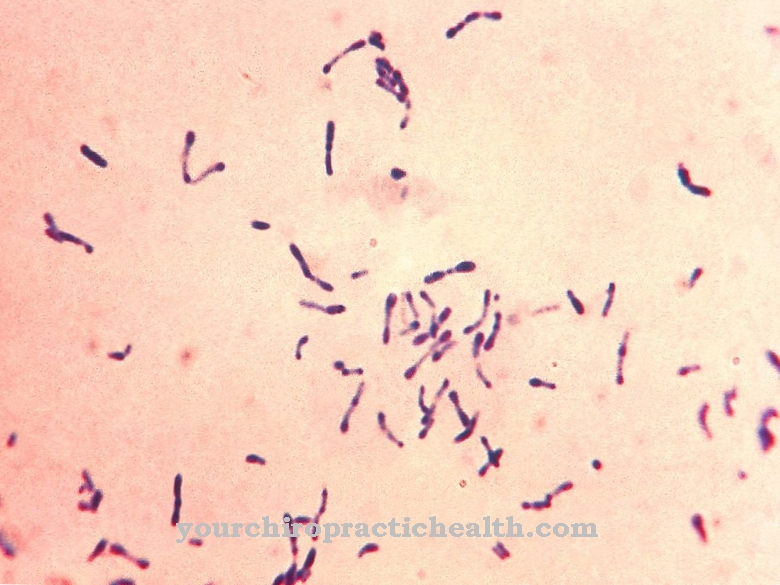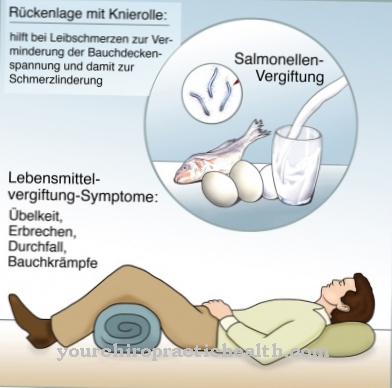Borrelia burgdorferi is the name of a screw bacterium. It triggers Lyme disease in people.
What is Borrelia burgdorferi?
Borrelia burgdorferi is a gram-negative screw bacterium that belongs to the genus Borrelia. It has an irregularly twisted structure.
Borrelia burgdorferi is the cause of Lyme borreliosis. The disease is caused by the three subspecies Borrelia burgdorferi sensu stricto, Burgdorferi afzelli and Burgdorferi garinii. The Swiss bacteriologist Willy Burgdorfer (1925-2014), who discovered it in 1981, gave the bacterial species its name.
Borrelia burgdorferi triggers various infectious diseases such as Lyme disease and relapsing fever. In Europe, however, the term borreliosis is often equated with Lyme borreliosis.
Occurrence, Distribution & Properties
North America is the most important distribution area of Borrelia burgdorferi. But the bacterium can also be found on the European continent. The pathogens stay where their host lives. Both humans and different mammals are attacked by Borrelia.
In order to be able to trigger an infection, however, the bacteria need lice or ticks as vectors. This means that Borrelia can only get into the body of another living being through a bite from a parasite. On the other hand, transmission from person to person is impossible.
While Borrelia burgdorferi sensu stricto is most common in the USA, Burgdorferi garinii and Burgdorferi afzelli are the most common in Europe. There are, however, greater variations in the distribution of the species and the infestation of the ticks. All known European Borrelia burgdorferi species can also be found in Germany.
In Europe, the common wood tick (Ixodes ricinus) is primarily responsible for Borrelia infections, while in the USA these are caused by the tick Ixodes scapularis and Ixodes pacificus. In Asia, the taiga tick (Ixodes persulcatus) causes infections with Borrelia burgdorferi.
Smaller rodents such as mice and rats as well as red deer serve as reservoir hosts for Borrelia. As a rule, these animals do not develop symptoms of the disease. Turtles can transmit bacteria to other hosts. The Borrelia are able to survive in mammals, which form completely different habitats, because they can adapt their gene expression to the new environment.
Borrelia burgdorferi is ingested by the tick larvae during a blood meal on an infected rodent and later transmitted to other hosts. The bacteria infest the midgut of the tick nymphs and settle there in the outer membrane through the lipoprotein OspA.
After the Borrelia have multiplied, they replace the OspA with the lipoprotein OspC. They migrate from the intestine towards the salivary glands, from which they can reach the next host body.
The ticks, which have now reached their adult stage, now attack larger mammals. However, these do not represent suitable reservoir hosts for Borrelia burgdorferi, which creates a dead end. If humans are infected, Lyme borreliosis occurs through a reaction of the immune system, which defends itself against the substances in the bacteria.
Borrelia burgdorferi is one of the few pathogens that is able to survive without iron. The metabolism of the bacterium replaces the iron-sulfur enzyme complexes with enzymes based on manganese. This enables the germ to bypass the laborious process of iron recruitment in the host body.
Borrelia burgdorferi is actively mobile and is a helical gram-negative bacterium. It has only a few turns and a diameter of 0.3 micrometers. Its length varies between 10 and 20 micrometers. Enveloped flagella bundles serve as a means of locomotion. Depending on the phase of the respective infection cycle, there are changes in the composition of the cell wall and outer membrane.
Illnesses & ailments
In Europe and North America, Borrelia burgdorferi mainly triggers Lyme borreliosis. Another disease is tick or lice relapsing fever, which occurs mainly in tropical and subtropical regions. The infection only rarely reaches Germany through travelers. The most common disease caused by Borrelia burgdorferi on the European continent is Lyme borreliosis. However, there are no typical Lyme disease areas such as early summer meningoencephalitis (TBE).
Plant-rich and wooded areas where ticks settle are considered endangered. Rodents live in these forests and are attacked by ticks, which causes the borrelia to be absorbed by the tick. The bacteria are able to hibernate in the tick. This leads to Lyme disease resurgence every year.
Transmission to humans takes place especially in the summer months. However, an infestation with Borrelia only occurs in 1 to 6 percent of all tick bites. The risk of infection increases with the duration of the suction process. But even with an infestation, not every person automatically becomes ill.
Lyme borreliosis becomes noticeable after an incubation period of between 5 and 30 days. Borrelia have the ability to hide from the immune system in the human body. They settle in areas such as the joints or the brain that are difficult to control by the immune system.
The first symptoms of Lyme borreliosis include the painless spread of reddening of the skin at the puncture site, as well as general complaints such as headache, muscle pain, fever, conjunctivitis, joint pain and swollen lymph nodes.
Without prompt treatment, there is a risk of serious complications that make a full recovery much more difficult. Antibiotics are suitable for eliminating Borrelia.


























.jpg)

